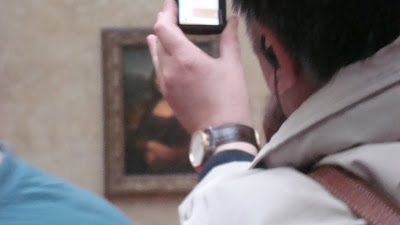

Aix-en-Provence to Paris
The story ends well because as I write we’re catapulting to Paris on the TGV (Train avec Grand Vitesse) (Train with great speed). As I wrote in my May 17 post “every traveler knows that carefree is a kind of complacency that is blind.”
Last night before our departure we carefully plotted our course from Aix to Avignon, consulted Google and peacefully fell asleep. This morning about 15 kilometres into our 56 kilometres drive we make a big, French toll road boobo because we exited. We were looking for gas and misunderstanding the signs we found ourselves on the toll road to Marseilles. On any American freeway correcting this mistake would have felt like a sunny day: circle around, go over the overpass and get back on the freeway. Not so in France. The entrance to a French toll road is monumental and feels like crossing a border into a DMZ. Even on a good day I am apprehensive and rattled by the formality and lock step rigidity of the process.
At the toll booth we were more than mildly confused and pressed the button for help. The phantom in the dark glass closet spits rapid fire French, and finally barks, “Payee, payee, payee.“ (Pay!) We threw enough coins into the basket until he sweetly said, “Merci, bonne journee!“ (Thanks and have a good day.) As we entered the freeway my gut said, “wrong”: Marseilles is south and we want to go north. We took the next exit and left the DMZ.
We tried this road, that road, looked at the map, applied logic, raised our voices. Nothing worked.
We saw a gendarme (policeman) who had pulled over a motorist to give him a ticket, and stopped to ask for help. They were arguing, but I used the magic phrase of formal politeness that almost always softens the French aloofness: “Excusez-moi de vous deranger Madame or Monsieur, mais j’ai une question” (Excuse me for bothering you Sir or Madame, but I have a question) He turned, smiled, gave me the directions I needed, and I had a good look at his cute derriere in his form fitting royal blue pants, but Zut alors! (s--t) my logic was not French toll road logic.
What looked like an interchange on the map was not, and we had a train to catch in Avignon. Defeated, we turned around and headed back to Aix to start over. That’s when our luck changed, the skies opened up, and BINGO we saw a sign to the toll road to Avignon on a round about, and we were back in the game.
We had about 40 kilometres of relief until our Google directions to the TGV train station took over, and we entered Avignon city traffic. I was sure we’d missed our turn because our directions from Google were seldom accurate. I wanted to throw up. Then we saw the TGV sign, and cheered. Our last hurtle was finding the rental car return and that required circling the station like a hawk with the scent of prey, driving down cul-de-sacs, finding someone to give us directions, and finally seeing the green sign that said “Car Rental Returns” in minuscule type on a small green sign.
I will forever be thankful for all the convenient exits on American freeways, and take advantage of all the beautiful rest stops, and would I ever drive again in France? Bien sur! (of course)


























